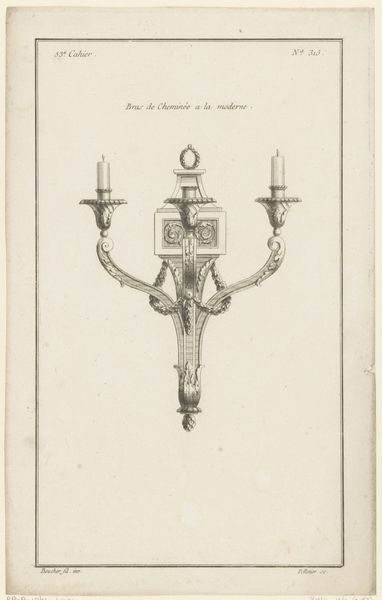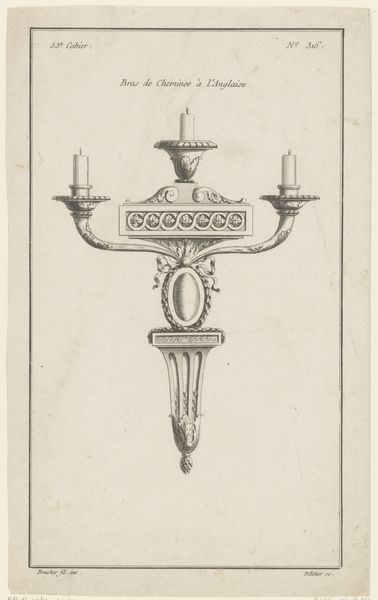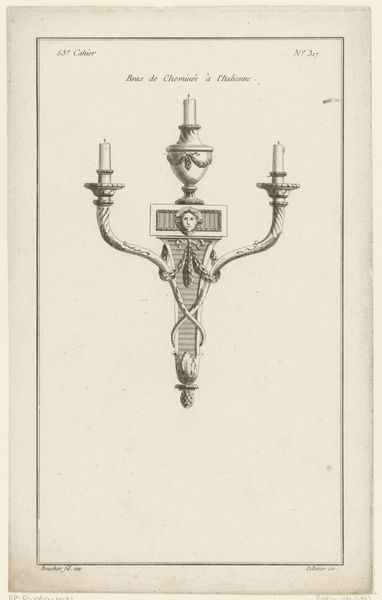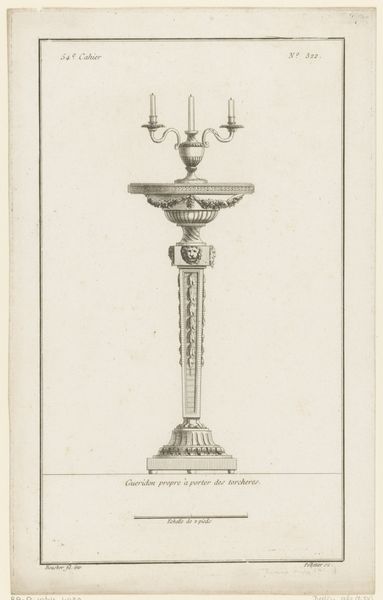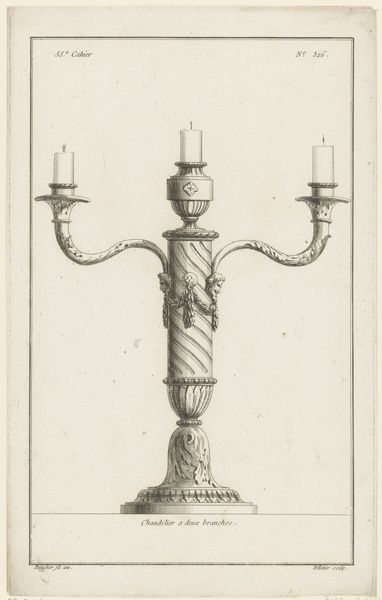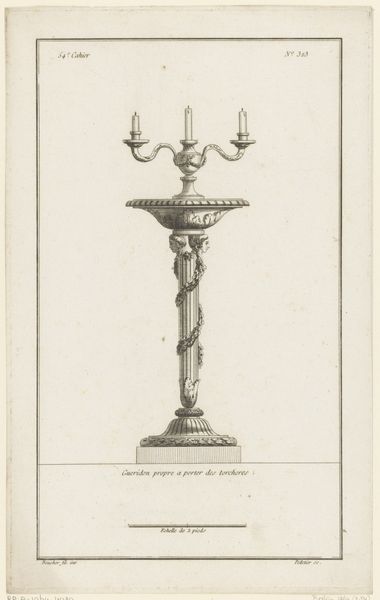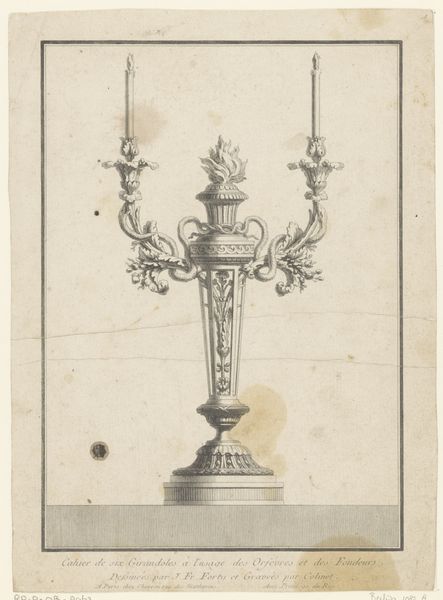
drawing, print, engraving
#
drawing
#
neoclacissism
# print
#
geometric
#
line
#
engraving
Dimensions: height 321 mm, width 202 mm
Copyright: Rijks Museum: Open Domain
Editor: This is Augustin Foin’s “Halfronde tafel,” or “Semi-Circular Table,” created between 1784 and 1785. It’s an engraving, a style I usually associate with detailed maps, but here it's used to depict furniture. I am immediately struck by how skeletal the design seems, laying bare its structure for the viewer. What can you tell us about this object’s design in its historical context? Curator: What we are viewing here is an exercise in Neoclassical restraint and order, prevalent at the end of the 18th century, evidenced in architectural drawings and furniture design. Consider what this print *does*. It’s not merely decorative; it's a model, circulating aesthetic ideas. What does it tell us about how design was disseminated? About who had access to such imagery and knowledge? Editor: So, it's less about showing off a finished piece and more about communicating an idea? It feels almost…democratic? Curator: In a way, yes. Engravings made design accessible, but primarily to a specific segment of society: artisans, wealthy patrons. The scale, labeled “Echelle de 3 Pieds”, provided precise measurements, democratizing the *how* more than the *why*. Notice the clean lines, the emphasis on geometric form, how they are combined with the naturalistic ornamentation, foliage, and urns on the table surface? Editor: I see it now; there’s a real tension between the very controlled lines of the half-circle and the more organic shapes above it. The urns sitting atop it solidify the impression of balance. Curator: Exactly! It speaks to the broader cultural desire to emulate classical ideals, not just in grand architecture but also in the intimate spaces of domestic life. This print then participates in the cultivation of taste, of aligning oneself with these ideals. It reveals a whole network of consumption and aspiration tied to political values of the time. Do you see how an image, like this, does more than illustrate? It instructs on how one should imagine a nation and a home. Editor: I didn't initially see it that way, but now I recognize this isn’t just furniture design. It's an expression of a much larger set of societal goals. Curator: Precisely. And in this way, an ostensibly simple engraving offers us a window into a complex cultural landscape.
Comments
No comments
Be the first to comment and join the conversation on the ultimate creative platform.
